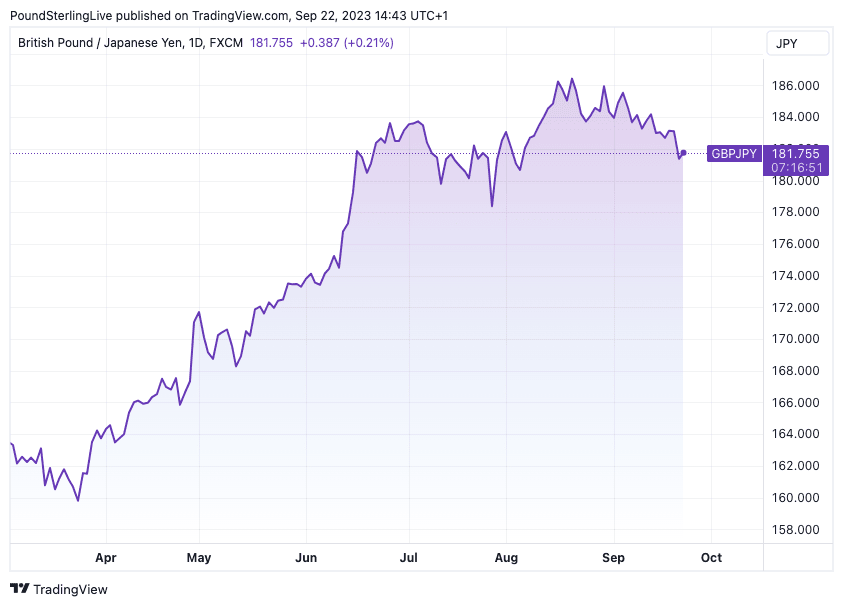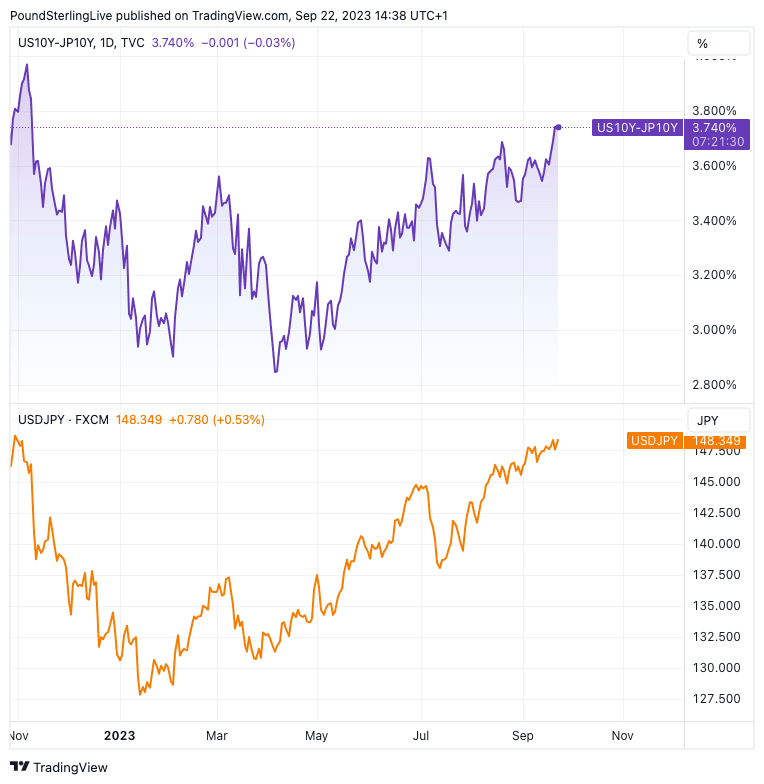Yen At One-year Lows as Bank of Japan Sticks to Ultra-loose Monetary Policy

Image © Adobe Stock
Written by Samer Hasn, Market Analyst and part of the Research Team at XS.com.
The Japanese yen continued its decline after a series of losses extending since around midnight yesterday.
The US dollar against the Japanese yen (USD/JPY) reached a new record level for the year at 148.458, the highest since November of last year after the Bank of Japan announced its decision on monetary policy.
The Bank of Japan's decision came as expected, to adhere to the ultra-loose monetary policy and to maintain the limits of ten-year bond yields within the previous guidance range.
This came despite the return of annual inflation to growth again. The National Core Consumer Price Index (CPI) recorded a growth of 3.1% last August on an annual basis, higher than expectations of 3.0%.
I think the continued flow of negative economic data may keep the Bank of Japan very cautious about moving to a tight monetary policy despite high inflation.
We had seen further contraction in manufacturing activities with au Jibun Bank Japan manufacturing PMI readings at the lowest levels since last February at 48.6, which was also far from expectations of 49.9. We also saw lower-than-expected GDP growth during the second quarter.
Above: GBPJPY at daily intervals - although the Yen is weak against the Dollar, Sterling is the G10 underperformer.
In addition to a more noticeable decline than expected in capital spending, industrial production, and household spending, in addition to a return to the rise in unemployment rates, which reached 2.7%, and an unexpectedly large trade balance deficit last August.
As for the continuing decline in the Japanese yen against the major currencies, the Japanese authorities do not seem ready to intervene in the foreign exchange market to control the national currency fluctuations.
The Minister of Finance spoke about his unwillingness to intervene and support the Japanese yen, for fear of the extreme volatility that would occur as a result.
This might cause more harm to the economy and declining foreign trade, which we have already witnessed through the trade balance deficit, which reached 930 billion last August, the highest since last May.
In bond markets, we have seen further record levels of 10-year Japanese bond yields, which reached 0.771% at the peak of yesterday's gains.
Above: The spread between U.S. and Japan ten-year yields (top) is the primary driver of Dollar-Yen.
However, these rises could not provide sufficient support for the Japanese yen.
We witnessed more record highs in ten-year US Treasury bond yields, which reached the highest levels that we have not seen since 2007, when they reached the level of 4.509% during the Asian session at dawn today.
As a result, the difference between ten-year Treasury bond yields and their Japanese counterpart continued to widen, reaching the highest levels this year that we have not seen since November of last year, at 3.751%, which may have contributed to putting more pressure on the Japanese yen.
In addition, the recent developments were reflected in a general decline in Japanese bond markets, with the iShares Core Japan Government Bond ETF (2561), which tracks the performance of Japanese government bonds, reaching the lowest levels since last January.









